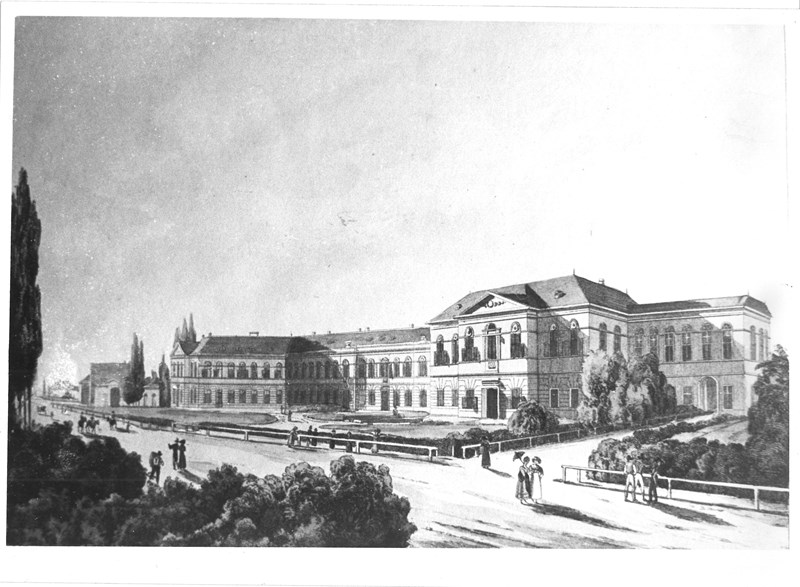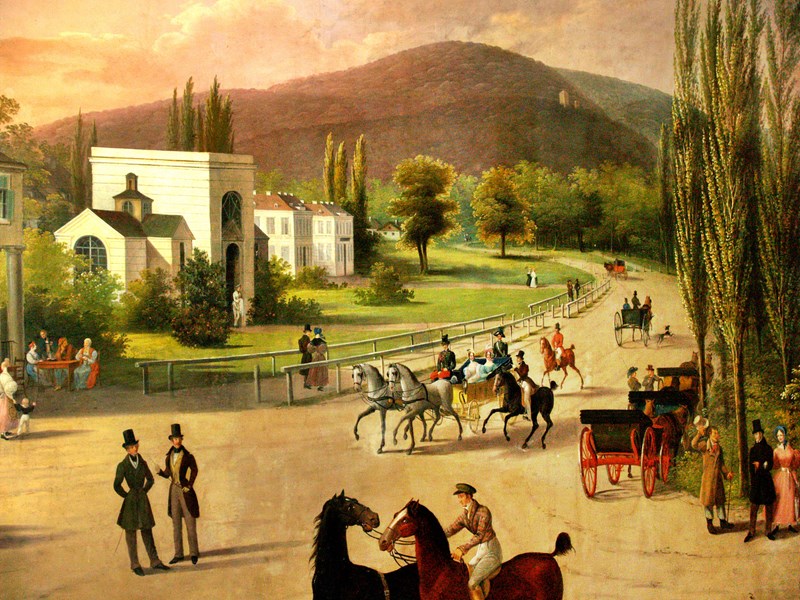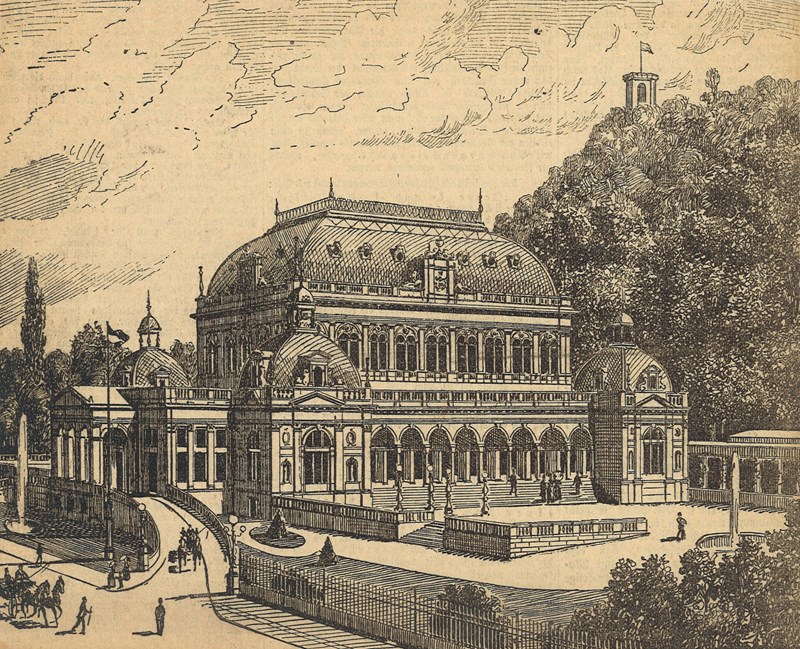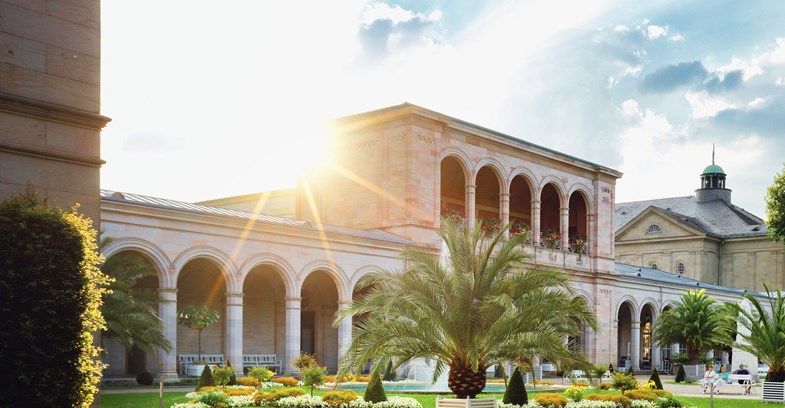Spa History of Baden
Emperor Franz and the dawn of the modern health spa resort
Known in Roman antiquity as Aquae, the spa cure in Baden was developed as a combination of medicine and entertainment. From 1793, Baden entered a golden age thanks to the initiative of Emperor Franz II / I and its designation as the official imperial spa residence. The health resort became an internationally famous fashionable spa town. Renowned architects such as Louis Montoyer, Charles Moreau and Joseph Kornhäusel shaped the townscape. The Kurpark, the town centre with the Kaiserhaus and the town hall, the neo-classical baths and the Grand Hotel Sauerhof bear witness to this period.

Spa town of the Habsburgs
The idyllic landscape of the Helenental valley attracts countless visitors to this day. Ludwig van Beethoven spent many summers in Baden and composed numerous works, including his Symphony No. 9, while Clemens Lothar Wenzel Prince Metternich, together with Emperor Franz, planned the Congress of Vienna for the reorganization of Europe after the Napoleonic Wars in the Palais Attems. The emperor and his brothers erected summer residences in the spa town. Until the end of the Austro-Hungarian monarchy, the Habsburg dynasty was a formative element in Baden.

Heyday of the World Spa Resort
The linking-up of the town to the railway network in 1840 reduced the travel time from Vienna to under an hour. The high nobility, financial aristocracy, high-ranking officials and the military gave Baden the urban flair of a metropolis every summer. The characteristic spa resort buildings such as baths, assembly rooms, hotels and the theatre, together with the imposing villa district, formed an extraordinary recreational ensemble. The heyday of the world spa continued until the economic crisis of 1929. The Thermalstrandbad Lido, the pump rooms and the Krupka recreation complex of the Kurpark with the Beethoven Temple are significant contributions to Baden as one of the Great Spa Towns of Europe.


